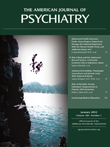The American Psychiatric Publishing Textbook of Psychosomatic Medicine: Psychiatric Care of the Medically Ill, 2nd edition
Psychosomatic medicine is the newest subspecialty in psychiatry, and it was born with The American Psychiatric Publishing Textbook of Psychosomatic Medicine: Psychiatric Care of the Medically Ill by its side. The first edition, published in 2005, was barely out-of-date when the second edition landed on my desk, weighing in at roughly 6.5 lbs. It is as up-to-date and relevant as a textbook can possibly be, with references from 2010. James Levenson edited this book, wrote a chapter himself, and also co-wrote eight out of the 41 chapters. There are 97 contributing authors, including 23 international authors. There are also at least 250 pages of references. Dr. Levenson's hand is evident throughout this volume, as each chapter outlines our knowledge and its limits; for example, does the minor motor-cognitive disorder associated with HIV always progress to dementia? No one yet knows.
The book is organized into four sections. Chapters 1–4 cover general principles of evaluation and management, legal and ethical issues, and psychological reactions to illness. Chapters 5–17 provide discussions on psychiatric symptoms and disorders in the medically ill (delirium, dementia, suicidality, somatization and somatoform disorders, disorders of deception, etc.). Chapters 18–37 are organized by medical specialty (heart disease, lung disease, organ transplantation, pain, etc.). Chapters 38–41 offer a review of psychiatric treatment in the medically ill (psychopharmacology, psychosocial treatments, ECT, and palliative care). The book is organized in the same way as the first edition, which makes for easy use to those of us familiar with the first edition.
There are two new chapters included in this second edition. A chapter on hematology addresses the hematological side effects of psychiatric medications, including evidence for a relationship between selective serotonin reuptake inhibitors and inhibition of platelet function. A chapter on medical toxicology describes, among other things, the Blame-X syndromes. These syndromes are diagnosed in patients with functional somatic presentations with external attributions, but with no objective toxicology data. These syndromes include idio-pathic environmental intolerance, medication sensitivity, and sick-building syndrome, and it is fascinating to read about them. Most of the chapters are packed full of facts that help us to knowledgeably navigate a steady and even-handed course between our Scylla and Charybdis: our monsters of medical and psychiatric diagnoses. However, two chapters stand out as exemplifying our role as psychiatrists. These are Chapter 4, titled “Psychological Responses to Illness,” written by Mark Groves and Philip Muskin, and Chapter 41, titled “Palliative Care,” written by William Breitbart, Harvey Max Chochinov, and Yesne Alici.
Chapter 4 begins, “A central task of the psychiatrist working with the medically ill is to understand the patient's subjective experience of illness and to design therapeutic interventions that modulate the patient's behavioral or emotional responses, decrease their distress and improve their medical outcomes” (p. 45). Once we are done with our diagnostic work, we are left sitting with the patient and the family and the need to describe how the patient is actually functioning in the face of illness. We may get called to consult on a patient because “the patient is in denial.” How do we determine whether denial is adaptive or maladaptive? What is the role of the family in their response to their relative's illness? Sociocultural factors influence how illness presents, how patients manage their symptoms and prognosis, and how families approach illness. This chapter provides us with the language to discuss the psychological effect of medical illness with our patients and their families as well as with our medical colleagues. This chapter also offers us the courage to give voice to the unexpressed psychological needs of our patients. It reminds us of why we chose to become psychiatrists.
Chapter 41 begins, “One of the most challenging roles for the psychosomatic medicine psychiatrist is to help guide terminally ill patients physically, psychologically and spiritually through the dying process” (p. 1053). This chapter emphasizes the humanitarian skills and attitudes needed to understand and work with the suffering of the patient and his or her family. The authors emphasize the need to be part of an interdisciplinary team. These two chapters demonstrate the unique understanding that we can bring to our patients and their families as well as to our colleagues.
Looking into the future, psychosomatic medicine psychiatrists will develop more of an outpatient practice, including an integrated role in the medical home. In the third edition of this textbook, I look forward to an expanded vision for the future of this subspecialty. I would also like to anticipate that each chapter will incorporate specific attitudes and skills needed in the field, along with the prescribed knowledge base. This would be helpful to trainees who are trying to integrate their medical knowledge and psychotherapeutic skills. An integrated approach to patient care is the distinguishing feature of who we are as psychosomatic medicine psychiatrists. In summary, almost all psychosomatic medicine psychiatrists use this book to prepare for the psychosomatic medicine board examination, in psychosomatic medicine fellowship programs, and as the “must have on your shelf” reference text. This subspecialty has come a long way since 2005, and we have the textbook to prove it.



